You are driving your car, and suddenly the message “Tire Pressure Sensor Fault” appears on your dashboard. What does this mean, and how expensive will it be to fix it? Will it disappear once the tires are inflated with the correct tire pressure?
Tire pressure sensors are one of those modern car features that, when they work correctly, you don’t even know they’re there. But when they go wrong, it can be a real pain to figure out what’s going on. In this post, we’ll explain what a tire pressure sensor fault message is, and walk you through how to fix it. So read on to learn more!
The “Tire Pressure Sensor Fault” message indicates that there is an issue with the tire pressure monitoring system (TPMS). There is most likely an issue with a tire pressure sensor or the connection to the sensor.
The error code may tell you that the tires’ air pressure is too low or too high or that one of the tire pressure sensors is defective.
It could also be caused by a faulty TPMS control unit, faulty wiring, or a TPMS reset. The easiest way to find out is to read the error codes from your TPMS control unit with an OBD2 scanner.
There are some reasons that could cause the tire pressure sensor fault message to appear on your dashboards. Remember to always check the trouble codes before making any conclusions, though. Here is a list of the 4 most common causes of a tire pressure sensor fault message:
A faulty tire pressure sensor is, unfortunately, the most common cause of this message. Tire pressure sensors are located in the tires and have batteries in them. After some years, these batteries may run out of batteries, and you have to replace the whole sensor.
Sometimes it happens that the tire pressure control module and the tire pressure sensors lose communication with each other. If this happens, it can sometimes work to reprogram the sensors. To reprogram the sensors, you need a TPMS reset tool.
If this happens, it can sometimes work to reprogram the sensors. To reprogram the sensors, you need a TPMS reset tool.
If you live in a colder country with cold weather, you probably change between the summer and winter tires. You may not know that you have to reset the TPMS after the wheel change, and if your car was never equipped with these tires before, you need to program the sensors to your car. If the tire pressure sensor fault message appeared after the tire change – you might need to program the sensors.
In some car models, the tire pressure sensor fault light can also mean low tire pressure in your car. Inflating your car is pretty easy, and if you do not know how to do it – you can go to any workshop or fuel station and let it do for you. Ensure that you have the exact tire pressure – as too high pressure can also cause this light to come on.
A TPMS system can operate in two different ways. If you have a vehicle manufactured after 2007, you will most likely have a TPMS system in your vehicle. Some vehicles have sensors in each tire of your vehicle. The sensors sense what tire pressure you have and send that information to your TPMS control unit.
If you have a vehicle manufactured after 2007, you will most likely have a TPMS system in your vehicle. Some vehicles have sensors in each tire of your vehicle. The sensors sense what tire pressure you have and send that information to your TPMS control unit.
If the tire pressure is too high or too low or the control unit cannot communicate with your sensors, the message “Tire Pressure Sensor Fault” appears on your dashboard.
Other cars have no sensors in their tires, and they use the ABS sensors to calculate your wheel rotation. If you have low pressure, the wheel diameter will be more compressed and must rotate faster to reach the same speed as the car. If the speed at one wheel is different than the other wheels, the vehicle stores this as an error code in your TPMS or ABS.
For this reason, you must drive for a distance before the car displays the tire pressure for you. This is only a simple estimation and not the exact tire pressure.
Fixing the tire pressure sensor is often pretty straightforward, and here are some tips on how to easily fix this message.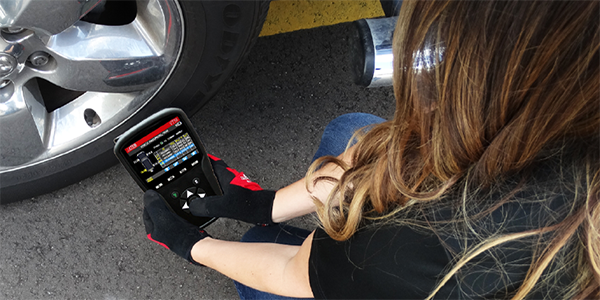
First, you should make sure that you have the correct tire pressure in all your tires. Check your tire pressure with a tire pressure gauge. To find the correct pressure you should check the tire pressure label. You can often find the label on the body behind the driver’s door. You can also find it in your repair manual.
Once you have inflated your tires to the correct pressure, you often have to manually reset the system. Some cars have a reset button, and in some cars, you should drive for around 15 minutes until the lights go out. Refer to your repair manual to reset the TPMS system on your vehicle. In some vehicles, you need a diagnostic tool to reset it.
If the error still occurs, you will need to read the TPMS system error codes to see the error codes. It could be a communication error with one of your tire pressure sensors or a damaged tire pressure sensor. Only the diagnostic tool can tell you. Remember that you need a diagnostic scanner to read enhanced trouble codes on your vehicle to read the TPMS control module.
Only the diagnostic tool can tell you. Remember that you need a diagnostic scanner to read enhanced trouble codes on your vehicle to read the TPMS control module.
Sometimes the tire pressure sensors lose the communication or programming values to the TPMS control module. If this happens, you have to reprogram all sensors to the control module. This can often be done with a quality TPMS reset tool.
If you have tried everything but the problem still occurs, you probably have a faulty tire pressure sensor. Check the trouble codes of which sensor the problem appears in, and replace this sensor. Do not forget to reprogram the sensors after this again.
Tire pressure sensors are typically installed inside your car tires. You can usually see it when you look at the tire air valve. When a tire pressure sensor is installed, you can often see a nut placed around the valve, but not in all cases.
The only way to find this out is to remove the tires from the rim or call your authorized dealer and ask them.
Yes, it is OK to drive with a tire pressure sensor failure if you check and monitor the pressure in your tires to ensure the pressure is correct. Driving with low tire pressure is both dangerous and bad for your car.
The price can range from $30 to $80 for a new tire pressure sensor, but it depends on the type of sensor. You may need to spend around $30 to $50 to install and program the new sensor also if you don’t know how to do it yourself.
You can replace a tire pressure sensor yourself, but it’s not easy. The sensors are located inside the tire, so you have to remove the tire to get to them. And if you don’t have the right tools or expertise, you could damage the sensor or the tire.
Fixing a tire pressure sensor fault message can cost anywhere from $0 to $500. If the cause of the failure is only low tire pressure, you can fix it for free. However, if there is an electrical fault or a faulty tire sensor, you could spend a few hundred dollars.
Find more information in our list of all car dashboard symbols.
Was this article helpful?
YesNo
by Mark Stevens
82 shares
Last Updated on June 1, 2022
You’ve probably been there before. While driving, your instrument cluster suddenly displays a “Tire Pressure Sensor Fault” message or warning light. But what exactly does it mean and how do you fix it?
Table of Contents
A tire pressure sensor is a small computer located inside each tire.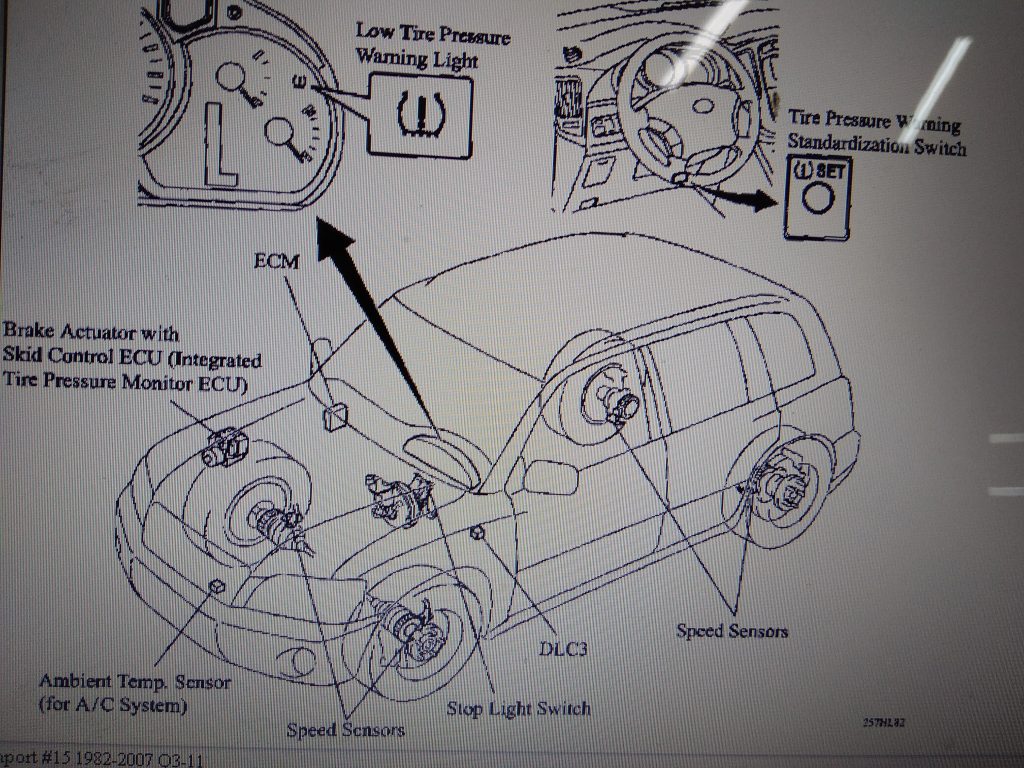 It is designed to alert drivers of an under-inflated tire. Tire pressure sensors, or TPMS for short, have been mandatory on all vehicles in the U.S. since 2007.
It is designed to alert drivers of an under-inflated tire. Tire pressure sensors, or TPMS for short, have been mandatory on all vehicles in the U.S. since 2007.
Need help with a car problem RIGHT NOW?
Click Here to chat online with a verified mechanic who will answer your questions.
There are two common types of tire pressure sensors. The first is a valve type: the sensor and valve stem are one unit. The second is a band sensor: the sensor is mounted to the inside of the rim with a metal band.
Both sensors illuminate the dash light when the pressure reading is lower than it’s supposed to be, alerting the driver to a tire with low air pressure.
When a tire pressure sensor detects a problem with tire pressure, it will send a signal to the car’s computer, which will then illuminate a light on the dash.
This light is generally bright yellow, and looks like an exclamation point (!), inside of a “U” shaped symbol.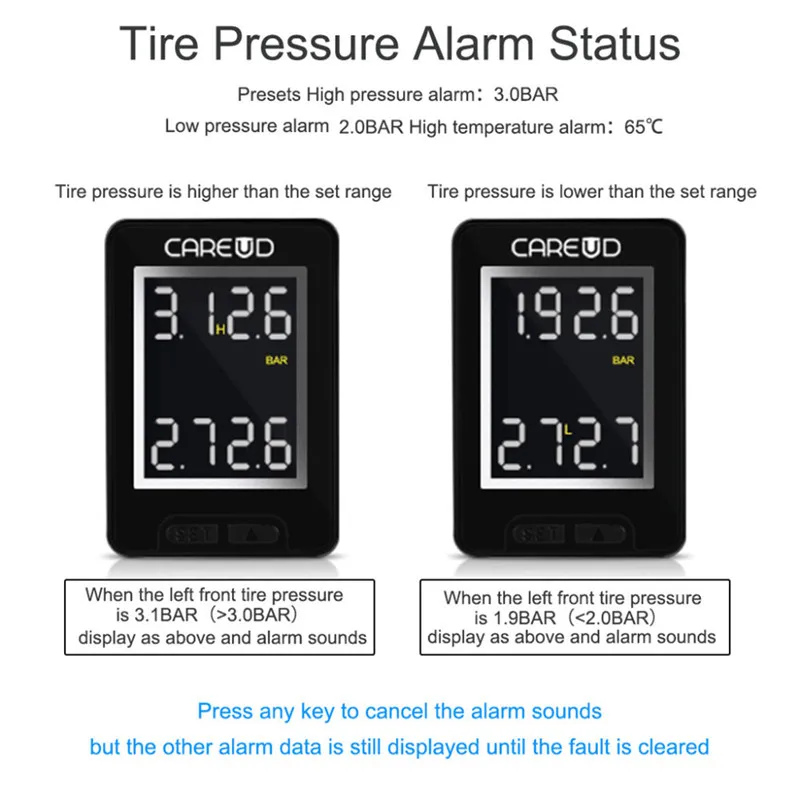 This is the drivers warning to check on their tires, as one may be flat or just low.
This is the drivers warning to check on their tires, as one may be flat or just low.
See Also: Why is My TPMS Light On But My Tires Are Fine?
Driving on an under-inflated tire can cause the vehicle to pull in one direction or the other, depending on which tire is low. This will cause the driver to have poor control over the vehicle, which is very dangerous.
Driving on a low tire can also at the least cause unbalanced tire wear and at most cause damage to the structural integrity of the tire, mainly the sidewall. This eventually can cause a blow out to occur once the tire is re-inflated. Driving on a completely flat tire will require that tire to be replaced due to this damage.
If you’ve confirmed that the tire pressure is adequate in all of the tires, then the the sensor has simply failed. At this point, the only concern the driver will have is the light glaring at them from the dash.
A failed sensor will require the driver to be more attentive to the pressure in their tires, since it is not reading the actual pressure anymore.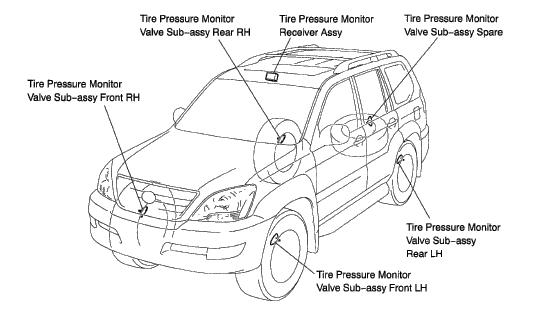 This should be fixed at the earliest convenience for safety reasons.
This should be fixed at the earliest convenience for safety reasons.
Related: What To Do If You Get a Flat
The quickest and easiest repair for this issue is to check the pressure of all the tires with a quality air pressure gauge. These gauges can be picked up at any parts store and even most gas stations.
Don’t forget to check the spare tire too! Many vehicles have a pressure sensor in the spare and it is often overlooked.
As little as 5 PSI under the manufacturer recommended pressure can cause the dash warning light to illuminate. The manufacturer recommended pressure can be found in the owners manual, or on a sticker located on the drivers side doorjamb.
Related: How Long Can You Drive on a Spare Tire?
If checking and adjusting the tire pressure to within the proper specs does not remedy the problem, chances are good replacing the tire pressure sensor is necessary. The failed sensor can be identified using an OBD2 scanner, or through the vehicle’s dashboard computer options, depending on the model.
The failed sensor can be identified using an OBD2 scanner, or through the vehicle’s dashboard computer options, depending on the model.
While having an automotive scan tool will let you diagnose the problem yourself, you can always have a local tire or repair shop perform a scan to quickly identify which sensor has failed. The battery life of these sensors range anywhere from 2 to 10 years.
In order to replace a failed tire pressure sensor, the wheel with the bad sensor must have the tire dismounted. Once the tire is off the rim, the old sensor can be removed and the new one installed.
After the new sensor is put in the rim, the tire will be remounted and inflated. Then comes reprogramming so the car’s computer will recognize it.
Since most car owners don’t have the capability to dismount and remount a tire, a trip to the local tire shop is necessary. Fortunately, the process isn’t very expensive and you can usually purchase the TPMS sensor cheaper on your own to save some money.
The reprogramming process varies for each vehicle’s make and model. Some cars require a certain amount of mileage to be put on the new sensor for the computer to recognize it, usually just a couple miles.
Other vehicles must be reprogrammed using the same scanner that found the bad one. The scanner programs the sensor’s signal to the car’s computer so the two can communicate. Without this, the dash light will stay illuminated because the computer can’t read the new sensor, making reprogramming a crucial part of the replacement.
The cost of a tire pressure sensor replacement varies with the car. The main cost of this repair is the sensor itself. Luxury brands, such as Audi and Land Rover, will have a much higher sensor cost than Ford, Honda, or Toyota, for example. These sensors can range anywhere from $50 up into the hundreds, for a single sensor.
The labor that goes into replacing the sensor is minimal, usually in the range of 1/2 to 1 labor hour per sensor.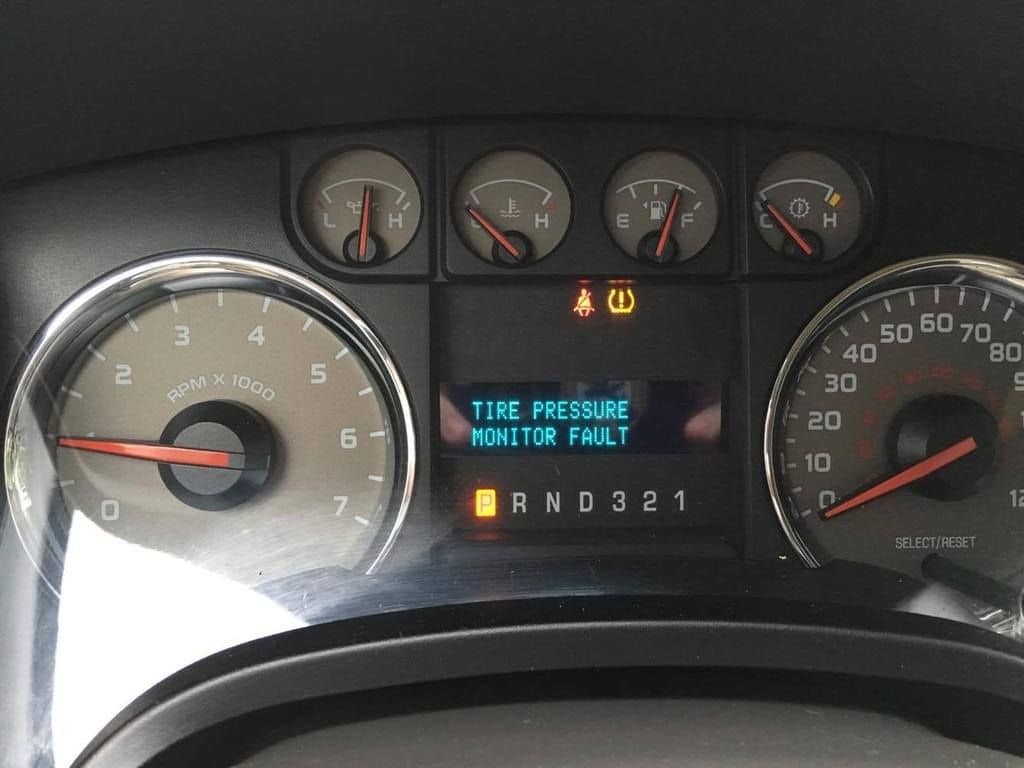 It is important to keep in mind, the cost of labor is different at all repair shops.
It is important to keep in mind, the cost of labor is different at all repair shops.
A big name dealership will have a higher hourly labor cost than a small family owned repair shop. Some shops will also charge a reprogramming fee. Always be sure to ask about hourly labor costs and reprogramming fees when looking for a place to replace the sensor.
Choosing a place to have a repair of any sort done is solely up to the owner of the vehicle, and sensor replacement is no different! Of course, it is always recommended to choose a repair shop that is trustworthy and reputable. Avoid those shady places!
However, when it comes to tire pressure sensors, a big name dealership is not always the best choice either. A local tire shop should have the capability and knowledge to replace the sensor correctly.
Be sure to inquire about labor and part warranty when having any kind of work done at a shop. No one wants to spend money on a repair, just to find out the part was faulty or the labor done wrong.
Ask a question, get an answer ASAP!
Tire pressure monitoring system ( TPMS - Tire Pressure Monitoring System ) is not installed on all vehicles. It refers to additional options and is aimed at timely detection of excessive deviations from the norm of air pressure in tires. You can mount it both independently and at an authorized dealer or in any car repair shop.
Tire pressure monitoring system
The monitoring system consists of:
Important! When purchasing pressure sensors for the first time, it is better to first call in a car service to be told which type of them is suitable.
Not all cars are equipped with on-board computers, you may have to buy equipment with a remote display to install it in the cabin.
The whole system is complex and sometimes fails. Most often, drivers are faced with such a problem - a low pressure signal appears on the display in any of the wheels, although in fact everything is in order. It is necessary to remove the sensor error, otherwise the tire pressure monitoring system will not work correctly.
Sensor error
The causes of the malfunction may be:
These are temporary faults. As soon as the car moves away from the source of the problem, everything will be restored.
This is already a serious problem that needs to be addressed. The constantly flashing indicator distracts from driving, and the beep is annoying and does not allow you to concentrate.
Tire pressure drop icon
Pressure sensor error is not uncommon. It has been noticed that owners of car brands such as Ford, Mercedes, Lexus and Kia sportage are especially affected by this. But this is only when installing non-original devices, in suspicious car services, in pursuit of cheapness. As a result, there is a failure in the system and grief, motorists have to look for information on how to remove the hated error and restore the normal functioning of the equipment.
Unfortunately, there is no universal remedy for all vehicles. But still, the actions of drivers in the event of such a problem should be approximately the same.
Checking tire pressure
1.First of all, you need to make sure that the system is really giving an error.
Often drivers are outraged by a burning indicator, thinking that everything is normal, and the pressure sensors are broken, but in reality everything is not at all like that.
Continue driving at the recommended speed of no more than 80 km/h. In this case, you should monitor the indicators. It is impossible to say how much time exactly you need to drive to remove the error icon, it is different for each car. If you listen to the reviews of motorists, then Mercedes and Kia sportage require a longer time period than Ford and Lexus. But more than an hour in any case should not pass.
2. When it is definitely established that the pressure sensor error is present, it is time for the second stage - you must refer to the instructions.
Tire Pressure Adaptation
Each vehicle and optional equipment must have a service manual. They also indicate possible errors and solutions. In most cases, the whole problem is solved by resetting the pressure sensor and rebooting the on-board computer.
In most cases, the whole problem is solved by resetting the pressure sensor and rebooting the on-board computer.
3. If the previous option did not help or there is no instruction manual, then you will have to contact a car service.
Tire pressure sensor repair
When choosing a company, you need to pay attention to its reputation and experience of employees, in this case, an auto electrician is interested. The specialist must have all the necessary equipment to diagnose and correct the error. To remove it, the master flashes (reprograms) the sensors. For this, special programs are used. You can try to do it yourself, armed with a tablet with an installed application and special hardware codes. But there is a chance to ruin everything completely.
Sensor errors
4. When nothing helped, the failure is not fixed, and the auto electrician advises buying new pressure sensors, then it's time to decide: drive with the indicator light on, turn off the system completely or purchase a new set.
Important! Original sensors are expensive, but last a long time. Clones and used ones are cheap, but their lifespan is not known.
The tire pressure monitoring system helps you drive safely. Therefore, it is necessary to monitor its correctness. When an indication occurs, everything should be checked, and if there was a failure in the system and this is an error, then it is urgent to remove it.
Related articles
TPMS or Tire Pressure Monitoring System is a set of equipment commonly found in modern cars. Its main job is to alert you if there are problems with tire pressure. For example, one tire has lost pressure - in this case it is not safe to drive, but the system will inform you about this, and you can inflate the wheel to avoid steering problems.
But sometimes the system does not work correctly. Some sensors may fail or the system needs to be rebooted. In this case, you may see a blinking or simply lit tire pressure error indicator on the dashboard. Resetting the pressure monitoring system will help you solve the problem if the sensor is working.
In this case, you may see a blinking or simply lit tire pressure error indicator on the dashboard. Resetting the pressure monitoring system will help you solve the problem if the sensor is working.
Please note that different vehicles may have different TPMS reset methods, so you may need to try several of them before you know the most effective one.
Initially, you will just need to hold the tire pressure sensor reset button for a few seconds until the pressure indicator flashes three times and then goes out. But sometimes it doesn't help much. So we found other ways to calm down the pressure control system.
First, locate the TPMS reset button, which is usually located somewhere under the steering wheel. Start the car, press and hold the button for 3 seconds. Then drive at a speed of 80 km/h for approximately 10 minutes. Of course, you will need to find a suitable track for this. Steady driving is an important part of resetting tire pressure sensors this way. Of course, before this operation, you will need to inflate the tires to the required pressure.
Of course, before this operation, you will need to inflate the tires to the required pressure.
In some vehicles, you will need to drive on any road and at any speed for 20 minutes after resetting the sensors, as long as you do not turn off the engine.
So, start the car, press the reset button and hold it for three seconds. Do not turn off the engine until 20 minutes have passed. You can drive or just let the engine idle for 20 minutes. This method of resetting pressure sensors should work for most vehicles. Again, inflate the tires to the correct pressure before resetting the system.
If the simple methods don't work with your machine, try another method. Start the engine so that the tire pressure monitoring system can register the changes. Then inflate the tire 0.2 bar above the recommended level. After a minute, completely deflate the tire. Wait one more minute to reset the sensors. Then inflate the tire to the optimum pressure level and let the engine run for another minute. The indicator should stop flashing.
Then inflate the tire to the optimum pressure level and let the engine run for another minute. The indicator should stop flashing.
The idea is to reset the entire engine electronics system by disconnecting the power supply from the battery. First, make sure all tires are at the correct pressure. After that, turn off the engine, open the hood and disconnect both terminals from the battery. Wait 10-15 minutes. Reconnect the battery and turn on the ignition to check if the indicator lamp goes out.
If the above methods do not work with your vehicle, there is another option. Find a manual for your car or open a forum thread that talks about resetting tire pressure sensors in your car. Look for the combination of steps the manufacturer recommends to reset the TPMS system. Sometimes the combination can be quite strange and even complex.
If all methods fail and the error light continues to flash, the problem may be with the sensors. It is the blinking signal of the tire pressure lamp that often indicates a sensor malfunction. If there is a problem with tire pressure, usually the light will just come on and not blink.
It is the blinking signal of the tire pressure lamp that often indicates a sensor malfunction. If there is a problem with tire pressure, usually the light will just come on and not blink.
This means that if the light is flashing, one of the sensors may be faulty. Replacing the element is not so easy because it is under the tire. The tire must be removed from the rim to replace the sensor.
After replacement, you will still need to reset the pressure control system for the new sensor to work. Otherwise, the indicator will flash or light up.
Where is the reset button for the tire pressure sensors?
The button is often located directly below the steering wheel. But there may be different options. If you don't find the TPMS reset button there, look around the steering wheel - it should be somewhere in this area.
Difficult to say for all vehicles, but for most vehicles, the travel time before the tire pressure monitoring system resets should be at least 10-15 minutes. If you turn off the engine earlier than 10 minutes after pressing the reset button, the TPMS will still send some error signals the next time the engine is started.
If you turn off the engine earlier than 10 minutes after pressing the reset button, the TPMS will still send some error signals the next time the engine is started.
Drivers sometimes upgrade tires and wheels to larger ones and want their stock pressure control modules to work properly. The problem is that larger or flat-ride tires will have a different optimum pressure level, so the original gauges will always show an error on your dashboard.
One way to solve the problem is to buy other sensors tuned to the desired tire pressure level. Another way is to reset the control system in your car at the service station. Just check which option will be cheaper for you.
It's hard to say why manufacturers didn't add an option to automatically reset tire pressure sensors in cars. In most post-2015 vehicles, the TPMS is autonomous enough that it won't bother you much with reset requests.